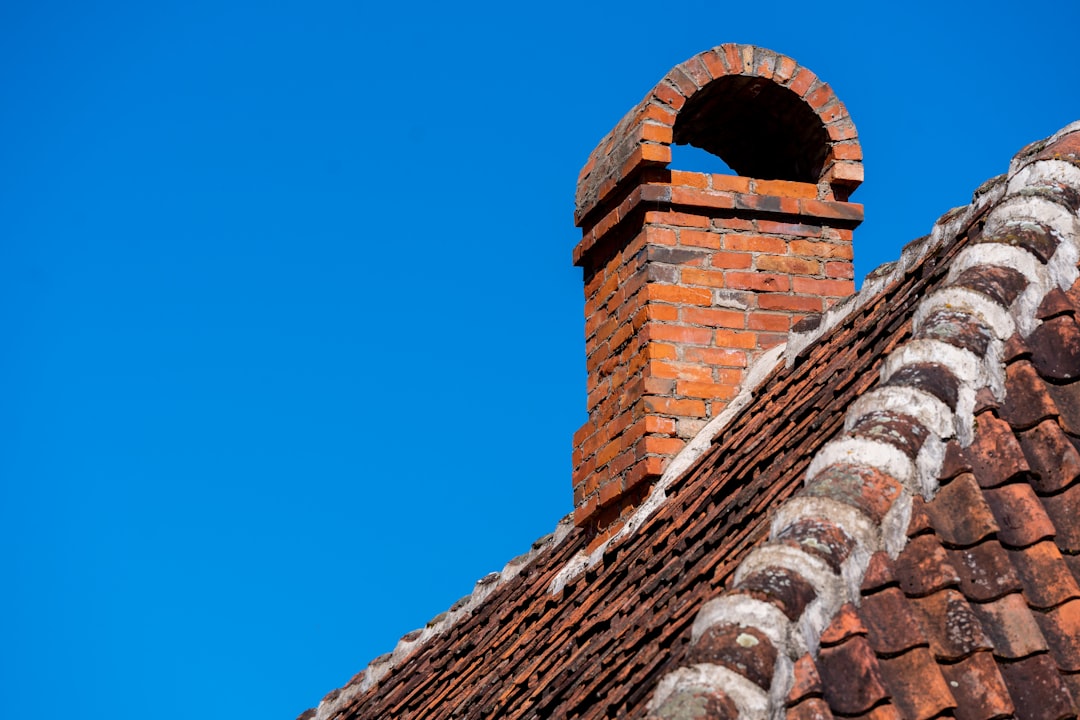

Engage prospects with a scan and streamline customer engagement with FREE QR code marketing tools by Sona – no strings attached!
Create a Free QR CodeFree consultation

No commitment

Engage prospects with a scan and streamline customer engagement with FREE QR code marketing tools by Sona – no strings attached!
Create a Free QR CodeFree consultation

No commitment
In today’s digitally driven world, QR codes have evolved from a novelty to a strategic powerhouse in bridging offline engagement with online action. For chimney repair services, QR codes represent a frictionless and highly effective way to increase bookings, improve customer data collection, and streamline critical workflows without cumbersome logins, app downloads, or manual processes.
Chimney repair services often rely on physical marketing assets like flyers, appointment cards, repair invoices, and job-site signage to connect with potential customers. Despite these efforts, critical pain points persist: prospects who show real intent often remain anonymous, customer interactions go untracked, and businesses struggle to prove which campaigns drive actual leads. Traditional materials too often lead to low conversion and poor attribution, resulting in missed high-value prospects and ultimately lost revenue opportunities.
By embedding QR codes, businesses can replace outdated processes such as printed forms or manual requests with digital channels that are simple to use and instantly measurable. Technology now enables service providers to surface previously anonymous interest, capture key engagement signals, and act on shifting needs, bridging gaps that old workflows simply cannot solve. The result is a more connected customer experience where every scan becomes an actionable data point that supports faster booking, better attribution, and stronger lifetime value.

Chimney repair businesses often face the frustration of missing high-potential prospects, whether from untracked direct mail or forgotten appointment cards. QR codes bridge the gap between physical touchpoints and digital outcomes, making it much easier to capture leads who may not otherwise submit a form or call, and ensuring that every point of engagement is actionable and traceable.
Here’s how to do it effectively:
QR codes are especially powerful when they replace analog processes that create friction. Instead of relying on paper estimate request forms that get lost, a QR code can open a prefilled Google Form that pushes directly into your CRM. Instead of asking a homeowner to keep a reminder card for their next inspection, a QR code on an invoice can trigger a one-tap rebooking flow with preferred dates. Instead of handing out generic brochures, a unique code on each brochure links to a local landing page with neighborhood-specific offers and seasonal safety tips.
To get the most from these programs, start small with one or two high-value placements, such as invoices and door hangers, then expand to service vehicles and job-site signage. Test message variations, track conversion rates from scan to appointment, and use the data to refine your creative and offer. Platforms like Sona QR help you generate dynamic codes, manage destinations, and view performance by asset or location, so your team can operate from a single source of truth.
Within chimney repair, offline marketing materials often fail to capture intent beyond an initial handoff. High-interest prospects are left untracked if they do not explicitly request follow-up. This results in a lack of visibility into who is engaging and which campaigns drive ROI, a common frustration when demonstrating the value of local outreach or mailers.
QR codes tackle these long-established challenges by:
For chimney repair services, moving from static, untracked materials to interactive, traceable campaigns transforms both marketing ROI and operational agility. Each code becomes a performance channel that can be iterated, optimized, and directly linked to booked inspections, repair approvals, and five-star reviews.

The challenge of collecting, storing, and reactivating prospect and customer information spans many chimney repair businesses. Teams risk missing follow-up or upsell opportunities when they rely purely on paper-based workflows or generic online forms.
Modern QR formats address these vulnerabilities and flex to multiple scenarios:
Dynamic QR solutions add agility as links and resources can be updated in real time, ensuring every asset deployed in the field stays relevant. If a safety bulletin changes or an offer expires, update the destination once instead of reprinting thousands of materials. With Sona QR, you can create, manage, and edit codes centrally, then monitor scan and conversion activity across devices and locations.

Many chimney repair businesses struggle to attribute direct ROI to their physical marketing investments, with valuable touchpoints often going untracked. Additionally, traditional door hangers, vehicle signage, or flyers seldom generate actionable insights when prospects engage offline but never fill out a form.
By embedding QR codes in these physical locations, businesses not only capture new leads but also surface granular intent signals that can drive growth:
Rooting your growth strategy in these touchpoint optimizations means fewer missed opportunities and a measurable lift in qualified pipelines. Over time, you will build a map of which neighborhoods respond, which messages convert, and which placements drive the biggest share of booked inspections.

Chimney repair teams frequently encounter friction in legacy workflows: paper inspection reports get lost, customers forget to book their next cleaning, and happy clients do not leave referrals or reviews because the follow-up loop breaks down. Each of these pain points translates into lost revenue and lower lifetime value.
Smart QR code deployments address these pitfalls by:
These use cases go beyond convenience. They create a closed loop between the physical service visit and the next digital action, whether that action is booking a sweep, approving a repair, or sharing a positive experience. When managed through a platform like Sona QR, each use case becomes a trackable program with defined outcomes and clear ROI.
A core frustration in chimney repair marketing is that high-intent interest, such as homeowners who request a quote but do not book, often falls through the cracks. Traditional tracking methods fail to segment leads based on their real journey or service preference, leaving conversion opportunities on the table.
Modern QR workflows transform each scan into a data-rich signal, making it possible to:
These behaviors help replace cold list targeting and make all outreach data driven, so every marketing dollar is better aligned to fit and timing. Over several campaigns, you will build rich audience segments such as “safety-conscious new homeowners,” “masonry repair prospects in zip codes with historic homes,” and “loyal sweep customers due for an annual inspection,” each receiving tailored messages that reflect their scan behavior.
For many chimney repair companies, the disconnect between print campaigns, digital destinations, and field service engagement means touchpoints operate in silos. As a result, it is challenging to prove which investments drive bookings, which outreach generates reviews, or how cross-channel campaigns perform over time.
QR codes now act as connectors, linking every piece of your marketing infrastructure and eliminating attribution blind spots:
Centralizing management means every campaign and asset is measurable, always connected, and directly attributable to real pipeline impact. Use Sona QR to create unique codes per channel, monitor performance, and trigger automated follow-up across email, SMS, and paid media, ensuring that offline interest flows seamlessly into your digital funnel.
A strong campaign starts with a clear outcome, then aligns the code type, creative, placement, and measurement to that goal. Use this framework to launch faster and improve results over time.
Define the business outcome you care about most, such as increasing chimney cleaning bookings from door hangers, reducing missed upsell opportunities after inspections, or capturing reviews within 24 hours of service. Focus on one outcome per campaign so your message stays simple and the landing experience is tightly aligned with the call to action.
Map the use case to the customer journey. Awareness-focused use cases might feature “Scan for a Winter Safety Checklist,” while conversion-focused use cases might feature “Scan to Approve Your Masonry Repair Quote.” The tighter the alignment, the higher the conversion rate.
Dynamic QR codes are ideal for trackable, editable links and for campaigns that will evolve. They allow you to update destinations without reprinting, add UTM parameters, and view analytics by placement or device. Use dynamic codes for booking flows, estimate approvals, and seasonal offers.
Static codes can work for evergreen content like a PDF chimney safety guide or a general contact page. However, you will miss granular data and flexibility. As a rule, choose dynamic if you want data, retargeting, or future flexibility. Platforms like Sona QR support both, with centralized management and reporting.
Treat the QR like a button, not a decoration. Add a bold frame, use brand colors, and pair the code with a clear, benefit-driven CTA such as “Scan to Book Your Annual Sweep” or “Scan for Before and After Photos.” Include a short URL as a backup for those who prefer typing.
Test scannability across devices, distances, and lighting conditions. Print at appropriate size for the context, larger for vehicle decals and yard signs, smaller but high contrast for invoices. Validate that the landing page loads quickly, reads well on mobile, and requires minimal taps to complete the desired action.
Prioritize placements that already see strong homeowner engagement. Invoices, service reports, door hangers, and vehicle decals are high value because they appear where intent and context are strong. For neighborhoods with heavy wood stove usage, pair door hangers with a “Scan for Creosote Warning Signs” guide to prime demand.
Match placement to behavior and scanning context. At job sites, a yard sign with “Scan to Ask About a Free Draft Check” captures neighbor curiosity. In direct mail, a personalized code that lands on a prefilled booking form reduces friction. Roll out in stages so you can compare placements and scale what works.
Instrument every campaign with UTM parameters and unique codes per asset. Use analytics to monitor scan volume, conversion rate, time to schedule, and upsell acceptance by channel. Set alerts for spikes in scan activity during cold snaps or wildfire smoke events when chimney concerns rise.
A or B test creative, CTAs, and destinations. Try “Scan for a Pre-Winter Inspection” versus “Scan for a Safety Certification Check” to see which resonates. Integrate with your CRM through Sona QR to trigger automated follow-ups, such as a reminder SMS if someone scans a quote but does not book within 48 hours. Use insights to refine future campaigns and improve ROI.

Chimney repair services often struggle to tie top-of-funnel engagement to actual revenue, especially as multiple touchpoints influence the path to conversion. This hampers both marketing optimization and justifying further investment. Knowing someone scanned a code is useful, but without understanding how that engagement influenced the buyer journey, you are flying blind.
Modern QR analytic tools now enable you to:
Sona QR captures real-world engagement and integrates with Sona.com to unify offline and online signals. Together they help you connect scans to revenue and make QR codes a measurable part of your performance marketing strategy, not just a convenience feature on print materials.
To address the risk of missed touchpoints and under-leveraged marketing assets, chimney repair businesses can implement several practical strategies:
Creative placements can also boost engagement. Consider refrigerator magnets with a “Scan when you smell smoke” quick guide, or a scan-to-claim winter tune-up coupon on chimney caps or damper tags installed during service. The key is to meet homeowners where they are most likely to act, then make the next step a single scan away.
QR codes are more than a shortcut, they are a strategy. For chimney repair services businesses, QR codes transform every physical asset, from door hangers and invoices to service tags and job-site signs, into a digital gateway for action and data. When each scan connects to a relevant destination, triggers an automated follow-up, and feeds your CRM, you create a system that earns more bookings with less friction.
By resolving common industry frustrations like missed high-value prospects, anonymous interest, and untracked engagement, QR integrations streamline processes, fuel better attribution, and enable proactive follow-up throughout the entire customer journey. The outcome is a more predictable pipeline, stronger customer relationships, and clear visibility into which campaigns deserve more investment.
That means:
With the right QR platform, such as Sona QR for creation and analytics alongside Sona.com for identity, attribution, and journey insights, chimney repair businesses can modernize operations, drive measurable revenue, and make every touchpoint count. Start by instrumenting one or two high-intent assets, monitor the results, then scale across your full marketing mix. You can generate and track your first codes quickly, and from there, every scan becomes an opportunity to serve homeowners better while growing your business. Start creating QR codes for free.
QR codes have revolutionized chimney repair services by transforming traditional communication into seamless, measurable customer engagement. From simplifying appointment scheduling to providing instant access to maintenance guides, QR codes enhance customer acquisition and elevate service experiences while streamlining technician workflows. Imagine giving clients instant, on-site access to repair histories and safety tips—all through a simple scan that drives trust and repeat business.
With Sona QR, creating dynamic, trackable QR codes tailored for chimney repair is effortless. Update information instantly without reprinting materials, monitor scan data in real time, and link every interaction directly to revenue growth. No more missed opportunities—just smarter, data-driven service that turns every scan into a loyal customer connection.
Start for free with Sona QR today and ignite your chimney repair business’s growth with every scan.
Signs include masonry cracks, damaged chimney caps, creosote buildup, smoke issues, and the need for safety inspections or repairs.
The article does not specify typical chimney repair costs.
Regular inspections and maintenance are recommended, with annual sweeps and pre-winter safety checks suggested to reduce risks and catch issues early.
Regular maintenance improves safety, prevents costly repairs, reduces risks like creosote buildup, and supports upsell opportunities and customer retention.
Services include chimney cleaning, masonry repair, cap repair, firebox upgrades, draft evaluations, and safety inspections.
QR codes bridge offline materials with online actions, enabling faster bookings, better customer data capture, improved attribution, and streamlined workflows without friction.
High-impact placements include invoices, door hangers, job-site signage, repair reports, flyers, direct mail, and service vehicles.
Dynamic QR codes for editable, trackable links; static QR codes for evergreen content; and formats like web links, vCards, SMS/email launchers, Wi-Fi access, and app downloads.
Annual inspections and timely repairs based on condition or safety recommendations are advised to maintain chimney health.
They provide instant access to booking, estimates, safety tips, and review requests while enabling follow-up through automated CRM integration.
Using QR code analytics with UTM parameters and CRM integration to measure scan volume, conversion rates, and attribute revenue to specific campaigns and placements.
Use Sona QR's trackable codes to improve customer acquisition and engagement today.
Create Your FREE Trackable QR Code in SecondsJoin results-focused teams combining Sona Platform automation with advanced Google Ads strategies to scale lead generation

Connect your existing CRM

Free Account Enrichment

No setup fees
No commitment required

Free consultation

Get a custom Google Ads roadmap for your business






Launch campaigns that generate qualified leads in 30 days or less.
